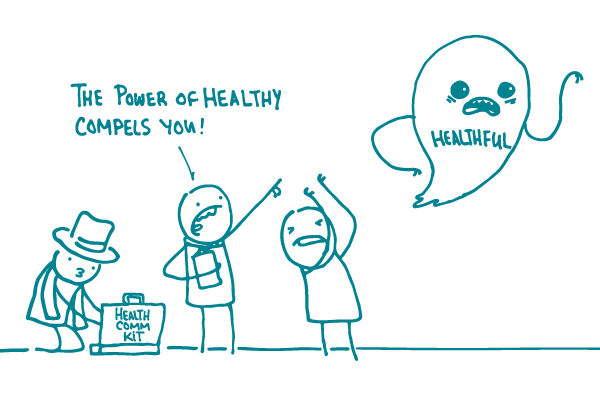
As much as we ❤︎ the English language, dear readers, we also feel haunted by the vague, archaic, jargon-y, and generally unhelpful words that often sneak into health communication. (You may recall our rants about exceeding preventable substances. Well, not quite — but you get us.)
The ghost we want to exorcise today? “Healthful.” Shudder.
Some people think “healthful” is just a dressed-up version of “healthy” — but that’s not totally true. Technically, “healthful” means “promoting good health” and “healthy” means “in good health.” So, according to conventional grammar rules, you’d describe a diet or lifestyle as healthful — not healthy.
That’s all well and good, but here’s our technical analysis of the word “healthful”: it sounds weird. As you probably know by now, best practices for health literacy tell us to write the way we speak, which makes your content easier to understand and less distracting. And most people just don’t talk about things being healthful.
We recommend sticking with “healthy,” even when it’s not the grammatically correct choice (don’t worry, we won’t tell your 7th grade English teacher). For example, we give you permission to say: “A healthy diet can help lower your risk for chronic health problems like heart disease.”
The bottom line: “Healthful” isn’t helpful — as a general rule, opt for “healthy” instead.
Browse recent posts